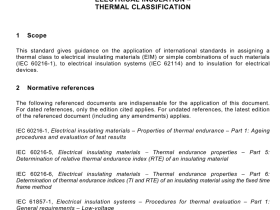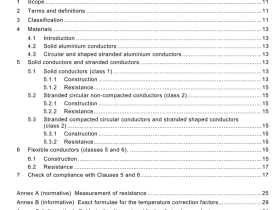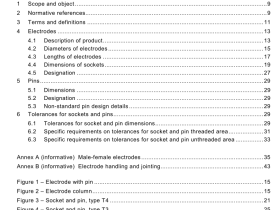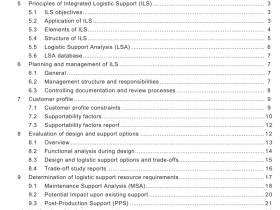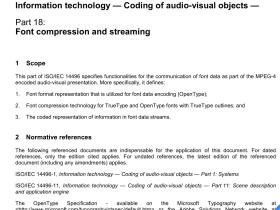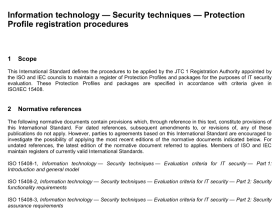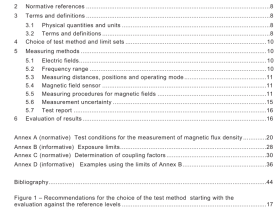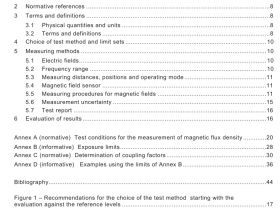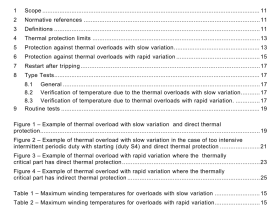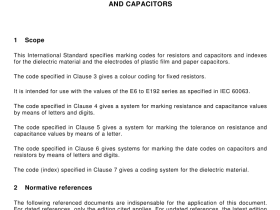ISO IEC 16485 pdf download
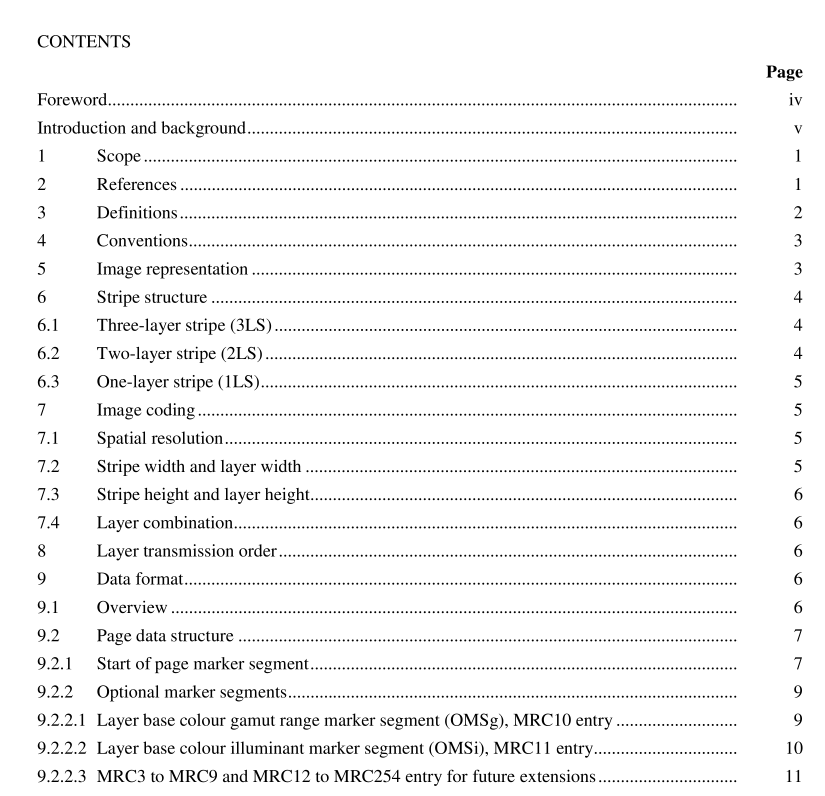
ISO IEC 16485 pdf download Information technology — Mixed Raster Content (MRC)
1 Scope
This Recommendation defines a means to efficiently represent raster-oriented pages that contain a mixture ofmulti-level and bi-level images. Any ofthe many ITU-T recommended encoding schemes, such as T.81 (JPEG) for the encoding ofmulti-level images and T.6 (MMR) for the encoding ofbi-level images, may be combined within the context ofthis Recommendation. Similarly, ITU-T spatial and colour resolutions may be combined within a page. This Recommendation does not define new encodings or resolutions. The method ofimage segmentation is beyond the scope ofthis Recommendation, segmentation is left to manufacturers’ implementation.
2 References
The following ITU-T Recommendations, and other references contain provisions, which through reference in this text, constitute provisions ofthis Recommendation. At the time ofpublication, the editions indicated were valid. All Recommendation and other references are subject to revision; all users ofthis Recommendation are therefore encouraged to investigate the possibility ofapplying the most recent edition ofthe Recommendation and other references listed below. A list ofthe currently valid ITU- T Recommendations is regularly published. – ITU-T Recommendation T.4 (1996) – Standardization ofGroup 3 facsimile terminals for document transmission.
– CCITT Recommendation T.6 (1988)
– Facsimile coding schemes and coding control functions for Group 4 facsimile apparatus. (Commonly referred to as MMR standard.)
– ITU-T Recommendation T. 42 (1996) – Continuous-tone colour representation method for facsimile.
– ITU-T Recommendation T.43 (1997) – Colour and gray-scale image representation using lossless coding scheme for facsimile. – CCITT Recommendation T.81 (1992) | ISO/IEC 10918-1:1994
– Information technology – Digital compression and coding ofcontinuous-tone still image – Requirements and guidelines. (Commonly referred to as JPEG standard.)
– ITU-T Recommendation T.82 (1993) | ISO/IEC 11544:1993 – Information technology – Coded representation ofpicture and audio information – Progressive bi-level image compression. (Commonly referred to as JBIG standard.)
– ITU-T Recommendation T.86 (1998) | ISO/IEC 10918-4:1999 – Information technology – Digital compression and coding ofcontinuous-tone still images: Registration ofJPEG profiles, SPIFF profiles, SPIFF tags, SPIFFcolour spaces, APPNmarkers, SPIFF compression types and Registration Authorities (REGAUT).
– ITU-T Recommendation T.85 (1995) – Application profile for Recommendation T.82 – Progressive bi-level image compression (JBIG coding scheme for facsimile apparatus).
3 Definitions
The definitions contained in Recommendations T.4, T.6, T.42, T.43, T.81, T.82 and T.85 apply, unless explicitly amended.
APP13 Marker: Encoded as X’FFED’, is the application marker, registered per Recommendation T.86,that uniquely identifies MRC.
End of page (EOP), encoded as two consecutive JPEG EOI (X’FFD9FFD9′).
Joint Bi-level Image Experts Group (JBIG), and also shorthand for the encoding method, described in Recommendation T.82, which was defined by this group.
NOTE – It is expected that JBIG will be changed to JBIG1 when referencing Recommendation T.82. This nomenclature change is the result ofa new standard that is being developed by the JBIG committee. This new standard will be referenced as JBIG2.
